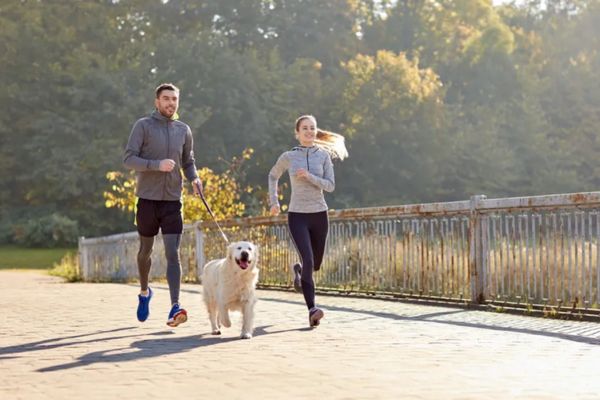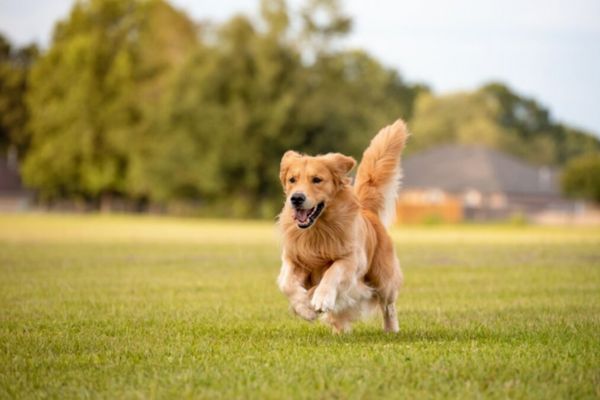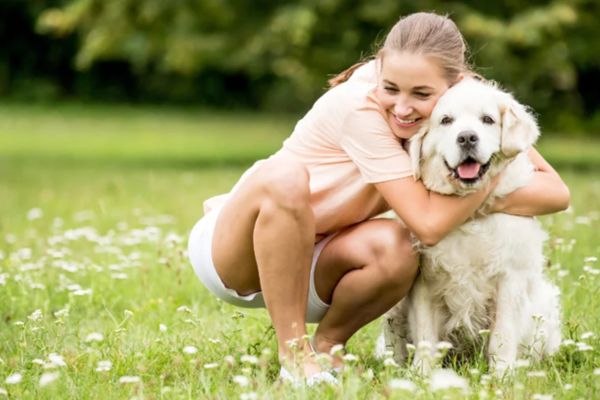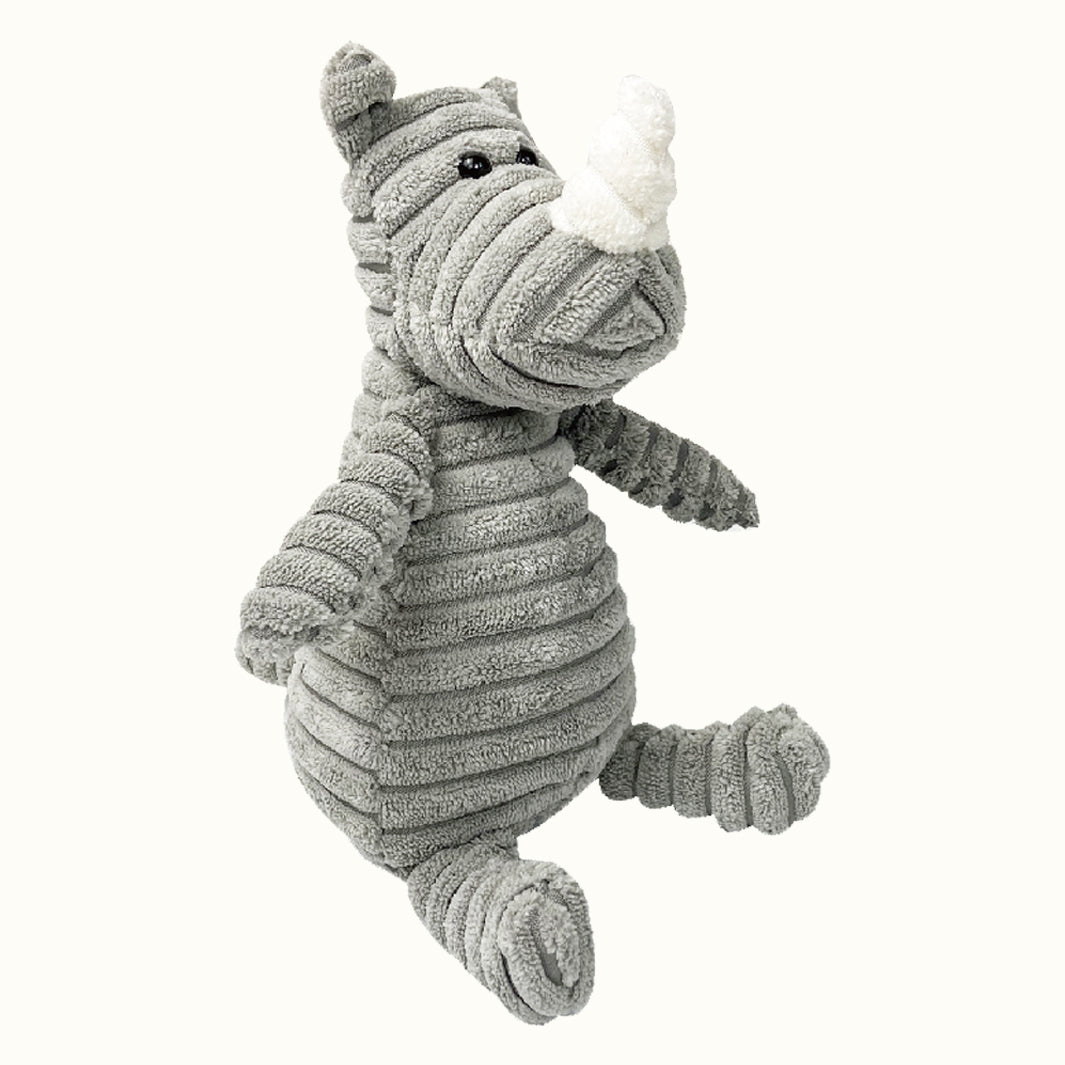Dog Exercise Tips For Spring
Spring is finally here, and it's the perfect time to get out and enjoy the warmer weather with your furry friend. After a long winter of being cooped up indoors, your dog is probably just as eager as you are to stretch their legs and soak up some sunshine. However, spring can also bring about some unique challenges when it comes to exercising your dog.
In this guide, we'll discuss some tips and tricks to keep your dog safe and healthy during spring exercise sessions. From proper hydration to avoiding common hazards, let's make sure you and your pup have a fun and active spring together!
Importance Of Exercise For Dogs

Exercise is crucial for maintaining the overall health and well-being of your dog. Just like humans, dogs need regular physical activity to stay fit, both mentally and physically. Exercise helps to prevent obesity and related health issues such as joint problems, heart disease, and diabetes. It also strengthens their muscles and bones, improves their cardiovascular system, and boosts their immune system.
Moreover, exercise is an essential part of a dog's mental stimulation. Without enough physical activity, dogs can become bored, anxious, and even destructive. Regular exercise helps to release pent-up energy and reduce stress levels in dogs, leading to better behavior and overall happiness.
As spring brings warmer weather and longer days, it's the ideal time to up your dog's exercise routine. However, it's important to keep in mind that different dogs have different exercise needs. Factors such as breed, age, size, and health condition should be considered when determining the appropriate amount and type of exercise for your dog.
Tips For Safe Spring Exercise

There's no denying that spring is a great time to get outside and be active with your dog. But as the seasons change, so do the potential dangers for our furry friends. Here are some tips to keep in mind while exercising your dog this spring:
Stay Hydrated
As the weather warms up, it's important to make sure your dog stays hydrated during exercise. Just like humans, dogs can get dehydrated quickly, especially when exerting themselves in the heat. Always have plenty of clean water available for your pup, whether you're going for a walk or playing at the park.
If you plan on taking long walks or hikes with your dog, consider bringing a collapsible water dish or investing in a portable pet water bottle. It's also important to take frequent breaks and offer your dog water during these longer exercise sessions.
It's also crucial to remember that dogs can't regulate their body temperature as efficiently as humans, so they are more susceptible to heat stroke. Signs of heat exhaustion in dogs include excessive panting, drooling, weakness, and vomiting. If you notice any of these signs, seek shade and offer water immediately. If symptoms persist, it's best to take your dog to the vet for further treatment.
Protect Against Fleas And Ticks
As the weather warms up, so do the chances of your dog coming in contact with fleas and ticks. These pesky parasites can cause a variety of health issues for your dog, including allergic reactions and potentially life-threatening diseases.
To protect your pup, make sure they are up to date on their flea and tick preventatives before heading out for exercise. You can also take additional precautions by avoiding areas with tall grass and checking your dog for fleas or ticks after outdoor activities.
If you do find a tick on your dog, it's important to remove it properly using tweezers and monitoring your dog for any signs of illness in the following days. If you suspect your dog has been bitten by a tick, consult your veterinarian for proper treatment.
Avoid Hot Pavement
As the temperature rises, so does the pavement temperature. Asphalt and concrete can get extremely hot during sunny days, which can burn your dog's paws and cause discomfort. To avoid this, exercise your dog on grass or dirt instead of pavement.
If you must walk on hot pavement, check the temperature with your hand before taking your dog on a walk. If it's too hot for your hand, it's too hot for their paws. You can also invest in protective booties for your dog to wear during walks.
Additionally, be mindful of the time of day you exercise your dog. Early morning and evening hours tend to be cooler and safer for outdoor activities.
Watch Out For Allergies
Spring is the season for allergies, and our furry friends are not immune to them. Dogs can experience seasonal allergies just like humans, causing symptoms such as itchy skin, runny nose, and watery eyes.
If you notice your dog showing signs of allergies during or after exercise, it's best to consult with your veterinarian. They may recommend allergy testing or prescribe medication to alleviate your dog's symptoms.
You can also try to minimize exposure to potential allergens by avoiding areas with high pollen counts and keeping your dog well-groomed and clean after outdoor activities.
Don't Overdo It
While it's important for dogs to get enough exercise, it's equally important not to overexert them. Just like humans, dogs can suffer from muscle strains and other injuries if they push themselves too hard during physical activity.
Pay attention to your dog's behavior and energy levels during exercise. If they start slowing down or seem fatigued, it may be time to take a break or cut the exercise session short.
It's also important not to force your dog into any strenuous activities if they are not used to them. Gradually increase their exercise level as their stamina and endurance improve.
Know Your Dog's Limits
As mentioned earlier, different dogs have different exercise needs based on factors such as breed, age, size, and health condition. It's important to know your dog's limitations and adjust their exercise routine accordingly.
For example, small or senior dogs may be unable to handle long walks or intense physical activities. On the other hand, high-energy breeds may require more rigorous exercise to stay happy and healthy.
It's always best to consult with your veterinarian before making any significant changes to your dog's exercise routine. They can guide what type and amount of exercise is best for your dog based on their unique needs.
Take Breaks In The Shade
When exercising your dog during warmer weather, it's essential to take breaks in the shade to prevent overheating. Find a cool and shady spot for your dog to rest and offer them water during these breaks.
If you're out for an extended period, consider bringing a portable canopy or umbrella to provide extra shade for your pup. This will also help protect them from direct sunlight, which can cause sunburns.
Additionally, be mindful of your dog's breathing and energy levels during breaks. If they seem excessively panting or fatigued, continue to offer water and consider ending the exercise session for the day. Always prioritize your dog's well-being over completing a workout.
Keep Them On A Leash (If Necessary)
Some dogs may tend to run off or get easily distracted while on walks or outdoor activities. In these cases, it's important to keep them on a leash to ensure their safety and prevent any unwanted incidents.
If your dog is not yet trained to walk off-leash, consider enrolling them in obedience training classes to work on commands and leash manners. This will also help strengthen your bond with your dog and make future exercise sessions more enjoyable for both of you.
Even if your dog is well-trained, it's always a good idea to have them wear a collar with identification tags in case they do happen to get away from you during outdoor activities. This will help increase the chances of them being safely returned to you.
Be Aware Of Potential Hazards, Such As Toxic Plants Or Other Animals
When exercising your dog outside, it's crucial to be aware of any potential hazards that may be present. This includes toxic plants, such as lilies and daffodils, which can cause serious health issues if ingested by your dog.
You should also keep an eye out for other animals, both domesticated and wild. Some dogs may tend to chase after animals, which can lead to dangerous encounters. Additionally, you should always be prepared for any potential interactions with other dogs by practicing good leash manners and being aware of your surroundings.
In the case of an emergency encounter with another animal, it's important to know how to react and handle the situation to ensure the safety of both your dog and yourself. Being aware of potential hazards and knowing how to handle them can prevent accidents and keep your outdoor exercise sessions safe for you and your dog.
So with these tips in mind, you can now confidently take your dog for a fulfilling and safe outdoor exercise session. Remember to always prioritize their well-being and adjust their routine as needed to keep them happy and healthy.
Why Not Try New Activities With Your Dog?
While walking and running are great forms of exercise for dogs, why not mix things up and try some new activities to keep them engaged and entertained? Activities such as swimming, hiking, or even agility courses can provide a fun and challenging experience for your dog while also providing physical exercise.
Not only will these activities help keep your dog fit and healthy, but they can also strengthen the bond between you and your furry friend. Engaging in activities together will create positive experiences and memories for both of you.
Just like with any new exercise routine, it's important to start slow and gradually increase the intensity or difficulty level as your dog becomes more comfortable and skilled. Be patient and encouraging with your dog as they learn and try new activities.
Additionally, make sure to provide plenty of breaks and keep your dog hydrated during these new activities. Always be aware of any potential hazards or dangers that may be present in the environment.
Trying new activities with your dog not only adds variety to their exercise routine but also provides mental stimulation and promotes overall well-being. So don't be afraid to explore and have fun with your furry companion!
Are There Any Alternatives To Traditional Exercise?

For some dogs, traditional forms of physical exercise may not be suitable due to health conditions or physical limitations. In these cases, alternative ways remain to keep your dog active and healthy.
One option is mental stimulation activities, such as puzzle toys or scent games. These types of activities can challenge your dog's brain and provide a similar level of mental stimulation as physical exercise.
Another alternative is hydrotherapy, which involves exercising in water and can be beneficial for dogs with joint issues or injuries. This low-impact form of exercise can help improve mobility and strengthen muscles.
Additionally, you can enroll your dog in obedience or agility classes that focus on training and mental stimulation rather than intense physical activity. These classes can also help improve your dog's listening skills and overall behavior.
It's important to consult with your veterinarian before starting any new exercise routine, especially if your dog has health concerns. They can guide what activities would be most suitable for your dog based on their individual needs.
FAQs
Why Is Exercise Important For Dogs?
Exercise is important for dogs to maintain physical and mental well-being. It helps them stay physically fit, strengthens their muscles and bones, and can prevent obesity and related health issues. Exercise also provides mental stimulation and can help reduce behavioral problems in dogs. Additionally, it's a great way to bond with your dog and keep them happy and content.
How Much Exercise Does My Dog Need?
The amount of exercise your dog needs depends on their age, size, breed, and overall health. Generally, dogs should get at least 30 minutes to 2 hours of physical activity each day. Puppies and senior dogs may require less intense exercise compared to adult dogs. It's important to consult with your veterinarian for specific recommendations based on your dog's individual needs.
Can I Over-Exercise My Dog?
Yes, it is possible to over-exercise your dog. Just like with humans, too much physical activity can lead to exhaustion, dehydration, and potential injuries. It's important to monitor your dog during exercise and take breaks as needed. Additionally, some breeds may have limitations or be more prone to certain health issues, so it's important to consult with your veterinarian for guidance on appropriate exercise levels for your dog.
Conclusion
In conclusion, exercising your dog is crucial for their overall health and well-being. By being aware of potential hazards, trying new activities, and considering alternatives to traditional exercise, you can keep your furry companion fit, happy, and healthy.
Always consult with your veterinarian for personalized recommendations and remember to have fun and bond with your dog during exercise sessions! So get out there with your furry companion and enjoy all the benefits that come with an active lifestyle. Keep their tails wagging and their hearts happy! Let's stay fit together! Happy exercising!














Leave a comment